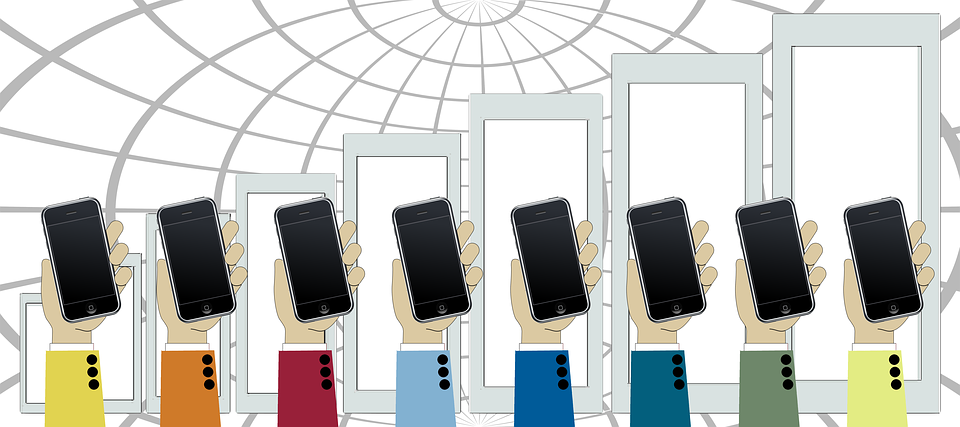By Jean-Jacques DeLisle, contributing writer
You see it in movies, on the streets, and even in subway tunnels: desperate people lifting their cellphones above their heads for better reception. The simple answer is that raising your cellphone above the height of your head is unlikely to change the transmission and reception characteristics from the cellphone to the cellphone tower it’s communicating with. However, there are a few practical steps that can be taken to improve cellphone reception in those unpleasant scenarios when the conversation must go on.

Depending on the environment and obstructions to cellphone signals, some areas, even a few feet apart, may experience very different cellphone reception. Image source: Pixabay.
Ensure that there are no obstructions to cellphone reception
The frequencies at which cellphones operate — at least for the time being until 5G technologies in the millimeter-wave range become available — pass through open air relatively well. Nevertheless, these signals are weakened or reflected by metallic objects, significant amounts of water, trees or dense foliage, and dense insulators, such as concrete and bricks. Hence, if you’re in a ditch or an alley and then move your cellphone to an area that isn’t obstructed to the cellphone towers, reception may improve.
Also, as with the now infamous iPhone antenna problem, even our hands and bodies could weaken cellphone signals enough to cause problems. Some cases may also weaken cellphone signals to and from the cellphone, and removing them may help.
Many urban environments have cellphone towers with arrays of antennas pointing in different directions on the tops of buildings to mitigate reception loss around corners and side streets. In places with minimal traffic, it’s unlikely that a cellphone company would go to great lengths to make sure that every nook and cranny had decent reception, so it could help to keep in mind. Though opening a window is unlikely to do any good, going to the top of a building or around the next corner may actually improve reception.
Not all service providers offer the same coverage
Though many companies license tower resources to offer better coverage maps, it’s still true that reception in certain areas will depend on what service provider you are using. Switching service providers may be the only way to get better coverage in specific problem areas. Also, coverage maps sometimes change, especially as new services and technologies come out, so this may not be a permanent solution and instead a shifting landscape.
Avoid interference
The ability of a cellphone receiver being able to isolate the desired signals from all other unwanted signals largely depends on the noise and interference in the environment. Sometimes, especially near microwaves, possibly wireless routers, many other cellphones, and other wireless equipment, the noise and interference near the cellphone could reduce the sensitivity of the receiver and reduce reception. Moving away from noise sources and interference could help, and in desperate times, shutting off other wireless electronics until you find the problem source could prevent the problem from occurring.
If it’s a chronic problem, use a cellphone signal booster
In some buildings or areas at the edge of a cellphone tower’s range, poor reception may be a chronic problem. In these cases, using an aftermarket cellphone signal booster could dramatically improve an area’s reception. Signal boosters work on the principle that the device has an improved antenna and amplifier system, or the antennas need to be placed in an area with much better reception. The cellphone signals to and from cellphones is then amplified through the signal booster.
Advertisement
Learn more about Electronic Products Magazine





